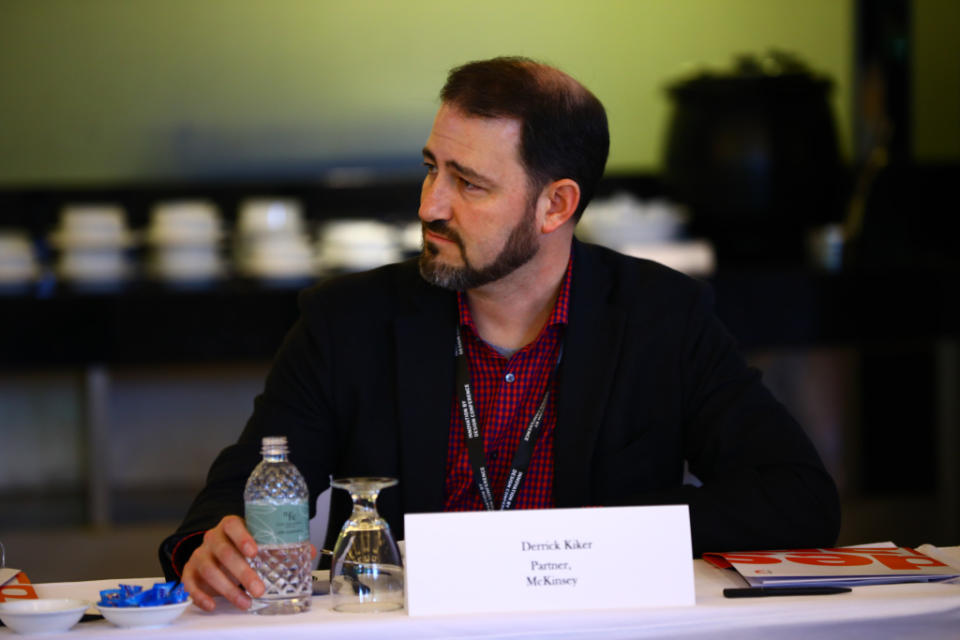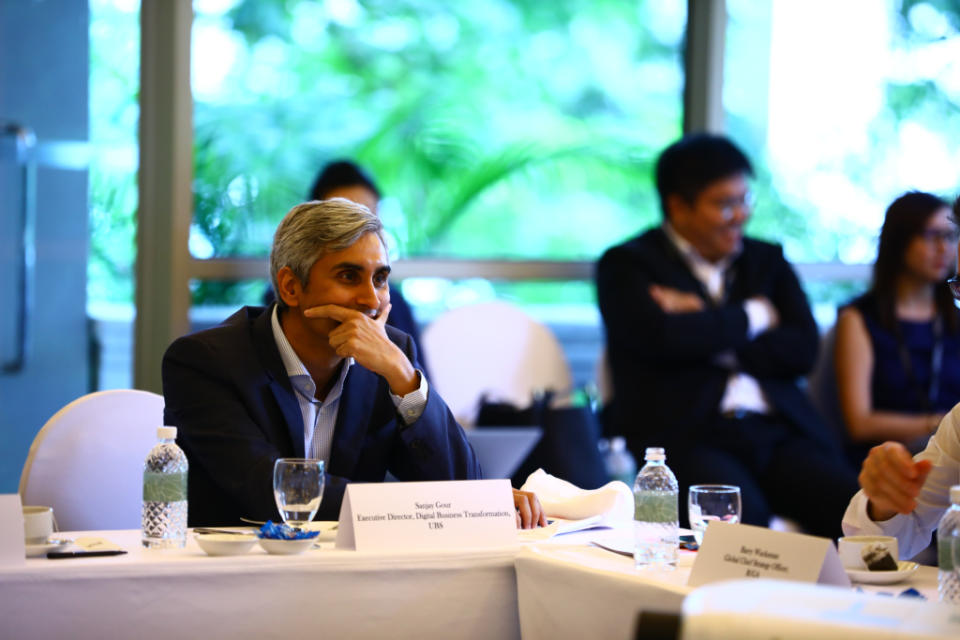Why Design Thinking Matters More in Business Than Ever
How do businesses let design inform or even lead their strategy? Should every company have their own chief design officer? And what role should design play in today’s way of leadership and organization?
More than a dozen C-suite executives and founders gathered to address these questions at an invitation-only roundtable at Singapore Design Week on Wednesday, with many agreeing on one emerging theme from this year’s Innovation by Design conference: Whatever the sector you’re in, good design is more important than ever.

“This is the great era of design,” said Barry Wacksman, executive president and chief strategy officer of digital agency R/GA, whose clients include Global 500 brands such as Nike, Samsung, and Unilever. But he cautioned that we’re also confronted by so much bad design that “when we encounter good design” it can feel “transformative.”
Several panelists spoke of the ways in which new and disruptive technologies—including the proliferation of mobile devices and the spread of social media—are empowering consumers, forcing large companies to listen and respond rather than preach and prescribe. In many ways, said Wacksman, the “culture has shifted from top-down to bottom-up.”
Ernesto Quinteros, chief design officer of Johnson & Johnson, said executives in virtually every sector could benefit from employing design to cope with technological upheaval. “I think everyone in this room needs to prepare. Even if you’re in an industry that’s being disrupted… it’s going to get disrupted again.”

Mokena Makeka, founder and principal of the Makeka Design Lab, a prominent architecture practice in South Africa, argued companies must rely on design to remind consumers of what they stand for. “It’s all about the human interface,” he said.
Derrick Kiker, a partner at McKinsey and the CEO of design firm LUNAR, said many large companies still struggle with fundamental organizational disparities between what’s known as “design thinking” and “business thinking.” Much of the time, executives “don’t want to get involved in the [creative] process,” he said.
“Anytime you create a chief design officer role and give them a lot of resources, there’s inherently pressure from the executive team. They want to see results almost immediately. And they don’t understand the progression of what has to happen,” Kiker said.
Impatient managers don’t care about the process, they just want results. “Every brief we get now is, ‘Can you make me the Apple of fill-in the-blank?’” joked Kiker. “I get really tired of answering that question.”

Mauro Porcini, PepsiCo’s first-ever chief design officer, said he was hired to spread design thinking at the 118-year-old company. He found “endless examples” of projects that the business team had rejected. To help colleagues shift to saying yes from no, his team began to produces prototypes of new ideas before debating the pros and cons.
When Porcini’s team conceptualized an emoji campaign for the Pepsi bottle, for example, company execs were already working with an external agency. “So they went on their own way, and we kept prototyping, we kept presenting.” Eventually, protoypes helped Porcini’s team’s ideas win colleagues over.

If nothing else, Wednesday’s meeting was a palpable representation of how far the design question extends beyond consumer marketing. Investment bankers, too, say they are facing cultural challenges.
“As an industry, financial services is one of the few that face very late disruption,” noted Sanjay Gour, the executive director of digital business transformation at UBS Wealth Management in the Asia Pacific region.


Now, however, the mentality must shift toward questions of “‘who are the clients? What are their needs?’” he argued. “Not, what are our assumptions.”
Sandeep Dubbireddi, chief operating officer of HSBC’s retail banking and wealth management in Singapore, agreed that teams should be adopting more risk-taking into their collective approach.
But they should do so while remaining empowered, he urged. “Trust the process, not so much the outcome.”

 Yahoo Finance
Yahoo Finance 